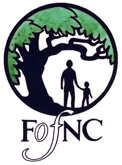Naphill Common - Timeline
There is plenty of scope for amateur historians to explore. It seems likely that the common began as two commons, Moseley and Naphill, but its origins are, as yet, largely a mystery. There are stories of drovers, a ghostly lady and a Kibbo-Kift site. There is archaeological evidence of the original common boundary; a registered ancient monument, a Romano-British farmstead; evidence of iron smelting; World War II tank tracks, and numerous other features, all waiting to be investigated.
If you have any information or can help in any way please do not hesitate to contact Trevor Hussey (see contact us.
Other references to Naphill Common can be found here
| Date (1566 - today) | Event |
| 2009 - 2023 | Fungal Survey with Bucks Fungus Group. See BFG website for full details |
| 2017, October - 2018, May | Tree felling Phase 2 |
| 2017, January - tba | Started work on clearing the ponds. On going (Oct - May each year for the next 5 years) |
| 2015, November | Great Beech blown down |
| 2015, October | Juniper cuttings reintroduced |
| 2014, Sept - 2015, Feb | Tree felling - Phase 1 |
| 2014, May | Management Plan 2014 10 year Management Plan for Naphill Common produced by FoNC |
| 2013, April - July | Moth Survey by Neil Fletcher |
| 2013, November | Pond Survey by Tony Marshall and Holly Bennett |
| 2012, April | Tree Survey added to website |
| 2012, November | Geology and Soil survey by Jill Eyres |
| 2011, July | Butterfly Survey by the Butterfly Conservation Society |
| 2011, May | History and Archaeology Group (HAG) formed Founded to research the history and archaeology of Naphill Common |
| 2010, Nov - 2011, Mar | The Clumps cleared by Friends of Naphill Common (8 working parties). |
| 2010 - 2012 | Invertebrates survey. Record of invertebrates found on Naphill Common by Johnh Tyler |
| 2010 | Survey of insects by John Tyler |
| 2010 | Information Boards erected |
| 2010 | Juniper cuttings taken |
| 2009 | Grasses Survey by Angus Idle |
| 2009 | Short Invertebrate Survey by M.G. Bloxam |
| 2009 | First 'Walk for Health'. These continue every month as a walk |
| 2008 | Friends of Naphill Common (FoNC) formed |
| 2004 | Survey of the Clumps by Nothhamptonshire Archaeology Society |
| 1999 | Book - 'Naphill and Walters Ash: Looking Back at Village Life' by Rex Lever published |
| 1997 | Survey of insects Insect_survey_1997 Survey of Insects on Naphill Common 1995 by Peter Hodge |
| 1996 | The Fungi of Naphill Common - a list from Natural England |
| 1995 - 2000 | Restoration work started but never finished |
| 1994 | Natural England proposed to restore Naphill Common by felling trees and removing scrub |
| 1991 | Shard of Roman "mortarium" pottery found in Dew Pond. |
| 1974 | Tree thinning carried out by West Wycombe Estate between Forge Road and Mosely Road |
| 1968 | Commons Registration Act - Last chance to claim under the Commons Registration Act 1965. |
| 1951 | Common declared a SSSI, Grade 1 |
| 1948 | Map by Wilfrid Smith shows Juniper Forest, Orchids, Buterflies etc. |
| 1947 |
Main sewer laid along the Common - Lady's Mile |
| 1939 - 1945 | Churchill tanks were tested by Broom and Wade on Naphill and Downley Commons. |
| 1938 | The Salvation Army Band from Wycombe played to a large audience on the Common |
| 1928 | Arthur Nicholls of Vincents Farm was the last farmer to graze cattle on Naphill Common |
| 1920 - 1929 | Fires among gorse and junipers |
| 1862 | Enclosure Award Confirmed |
| 1860 - 1869 | Present roads probably laid out |
| 1856 | Act of Parliment. Hughenden Parish Enclosed |
| 1856 | Naphill Common appears on the Ordance Survey Map of 1856 |
| 1853 | Application for enclosure |
| 1850 - 1859 | Drovers ceased their overnight stops |
| 1850 - 1925 | From Victorian times (1850) fairs were held on Naphill Common |
| 1847 | Naphill Common appears on the Tithe Map of 1847 |
| 1700 - 1820 | Encroachment on Naphill Common (18th - 19th Century). 1700s to early 1800s there was a lot of encroachment, with several houses and enclosures on the common, e.g. Heyshams. Many people were fined for encroachment. |
| 1700 - 1899 | Drovers used Naphill Common (1700's - 1800's). Likely that Drovers, moving cattle to St Albans or London from as far as Wales, used Naphill Common for pasture and water from the ponds |
| 1566 | Elizabeth 1 rides across Common after staying at Bradenham Manor |

